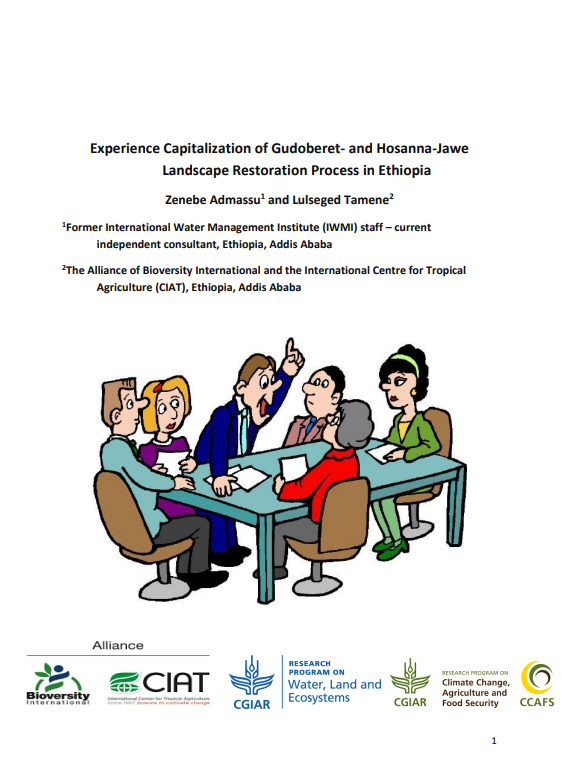This study was undertaken in the Gudoberet- and Jawe landscapes located in Amhara and SNNP regions of Ethiopia, respectively. Experience Capitalization (EC) process approach was used to capture a wide range of experiences related to landscape restoration project in Gudoberet- and Jawe landscapes. Although there has been several studies regarding landscape restoration in Ethiopia, the use of EC process in landscape restoration is the first attempt in the country. The approach involves various procedures such as selecting the intervention, setting the boundaries of intervention, gathering information, describing interventions and analysis (filtering lessons). SWC on cultivated lands, gully rehabilitation, exclosure and water harvesting were the major interventions implemented for landscape restoration. Focus group discussion, key informant interview and transect walks were used to gather primary information. The result shows that participants considered economic, environmental, social and gender criteria to assess landscape restoration interventions. Based on the EC process, the following major lessons are identified:
• Since landscape restoration requires multiple interventions, strengthening collaboration and integration of institutions including CGIAR centers is crucial to improve the success of landscape restoration program in the country.
• Although livestock management is considered as an important part of the landscape restoration process in both sites, free grazing affected the adoption of biological SWC measures. The experience shows that there is a long way to achieve complete cut-and-carry system of livestock production mainly due to insufficient biomass production that can be used as cut-and carry system. Unless a complete cut-and-carry system is practiced, investment in landscape restoration mainly soil and water conservation practices will continue indefinitely. Strategies are being explored to reduce the number of livestock and enhance biomass to enhance the adoption of cut-and-carry livestock production system.
• Sectoral integration (crop, livestock, forest, water, etc.) will be crucial for the successful achievement of landscape restoration efforts.
• Creating awareness using various approaches, government focus on landscape management, collaboration among institutions, commitment of project staff and the community contributed for the success of landscape restoration process.
• There is a clear need to integrate income generating options and youth employment schemes into the landscape restoration efforts to sustain the land and water management practices and their benefits.
• Proper linkages between ‘research’ and development organizations is crucial to bring in win-win solutions focusing on their areas of mandate for the success of landscape restoration efforts.
• Use of cross-site visits, evidence generation, multi-stakeholder integration, community mobilization, linked technologies and use of physical and biological SWC are the major lessons learned for successful restoration. However, this study focused only on two small landscapes with minimum investment in landscape restoration. It is clear that the country has invested heavily in landscape restoration activities through various projects such as SLMP, MERET and PSNP. However, the outcomes in terms of EC are yet to be fully understood under these projects. Hence, a comprehensive EC on needs to be explored for the adoption of successful approaches in landscape restoration process in the country and beyond.
Admassue, Zenebe; Tamene, Lulseged.

